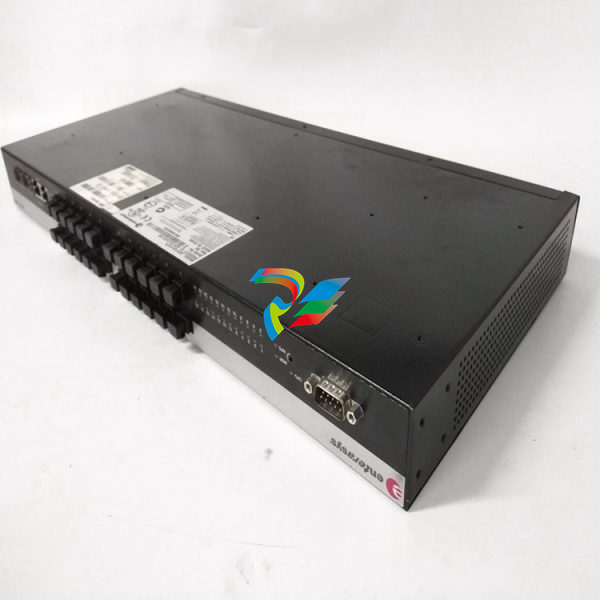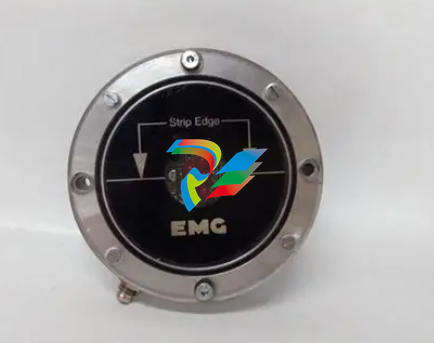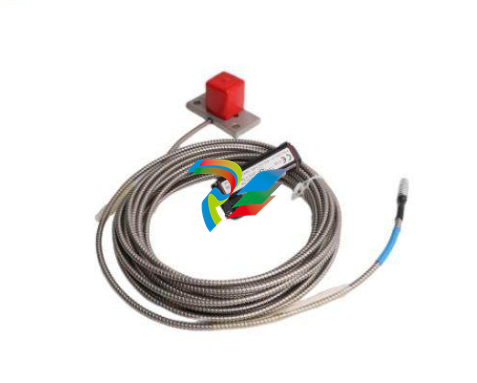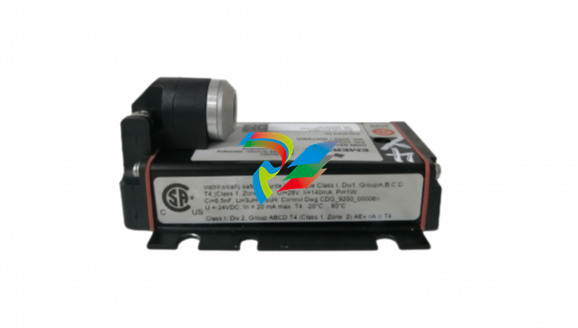
ABBDCS800 Quick guide DCS800 Drives (20 A to 5200 A)
E-STOP button without any time delay. In case of ramp stop
selection the, K 15 timer relay must be set longer than the
EStopRamp (22.04). For COAST selection, the drive opens
the main contactor immediately.
OFF2 switches off DC current as fast as possible and prepares the drive for opening main contactor or drop down
mains supply. For a normal DC motor load the time to switch
OFF the DC current is below 20 ms. This function should be
connected to all signals and safety functions opening the main
contactor. This function is important for 4-quadrant drives.
Do not open main contactor during regenerative current.
The correct sequence is
1. switch off regenerative current
2. then open the main contactor
In case of the E-STOP is hit, the information is transferred
to the converter via digital input 5. In case of rampstop, or
max torque selection the converter will decelerate the motor
and then open main contactor.
If the drive has not finished the function within the K15 timer
setting, the drive must get the command to switch OFF the
current via K16. After K16 timer set has elapsed the main
contactor is opened independent of the drives status.

Notes For North American Installations
1. EMC conformity is not usually required in North America. In most cases, the section “Notes on EMC” can be
bypassed. In this manual, you will see references to DIN, EN
and VDE standards. These are European standards and,
generally, do not apply to North America. It is, however,
the responsibility of the user to determine which standards
need to be followed.
2. If using a DC contactor, you must connect an auxiliary
contact to a digital input of your choice and set para. MainContAck accordingly. Set the following parameters:
MainContAck (10.21) = DI-1 (or any input you
choose for the DC cont.
auxiliary contact)
DO8BitNo (14.16) = 10
MainContCtrlMode (21.16) = DCcontact (3)
Set these parameters AFTER macros are loaded but BEFORE
the drive is commissioned.
Digital output 8 (DO-8) must be used to turn the DC
contactor on and off.
3. If using Dynamic Braking, the drive allows you to select the stopping method under three different situations.
Parameters 21.02, 21.03 and 21.04 select the stopping
method for loss of
the OnOff, run command (StartStop, Jog1, Jog2, etc.), and
E-Stop input, respectively.
Each can be set to:
• RampStop • TorqueLimit
• CoastStop • DynBraking
In order to command the drive to perform a DB stop, one
or more of these parameters must be set to DynBraking.
Most users will want the drive to ramp stop when OnOff or a
run command (StartStop, Jog1, Jog2, etc.) input is cleared,
and dynamically brake when the E-Stop input is cleared. In
that case, use the following settings:
• Off1Mode (21.02) = RampStop
• StopMode (21.03) = RampStop
• E StopMode (21.04) = DynBraking
However, any case is allowed and the final decision is left
to the user.
Other parameters control stops during faults.
See:
LocalLossCtrl (30.27) ComLossCtrl (30.28)
FaultStopMode (30.30) SpeedFbFltMode (30.36)
If using EMF feedback with dynamic braking, set:
• DynBrakeDly (50.11) = t
Where: t = the time (sec) it normally takes the motor
to stop during dynamic braking
DC contactor US:
DC contactor US K1.1 is a special designed contactor with 2x
NO contacts for C1 and D1 connection and 1x NC contact for
connection of Dynamic Brake resistor RB.
The contactor should be controlled by signal 6.03 Bit 10.
The acknowledge can be connected to parameter:
10.21 MainContAck
10.23 DCBreakAck
Overview of the Installation and Commissioning Process
This is to protect the motor and converter if a commutation
fault should occur. NOTE: DC output fuses are the same
type and size as AC line fuses.
Line reactor:
All thyristor-based dc converters cause notching in the AC
line due to motor commutation. A properly sized line reactor
will mitigate the effect on the line. Unless the converter uses
a dedicated isolation transformer, each converter requires
its own line reactor.
AC or DC contactor:
A contactor is required to safely disconnect the motor from
the incoming power when the converter is off. The contactor
can be installed between the line and the converter (an AC
contactor) or between the converter and the motor (a DC
contactor). Do not use both.
IMPORTANT: Other equipment may be necessary depending on application and local codes.
Step 1:
Check converter for damage. Contact ABB Technical Support
if damage is found. In North America, call 1-800-435-7365
(1-800-HELP-365)
Step 2:
Select supporting hardware for the converter:
For specific recommendations for fuses, reactors, and
contactors, see the DCS800 hardware manual or technical
catalog.
Circuit breaker or disconnect:
Current rating = Idc * 0.816 * 1.25 (min)
= Idc * 0.816 * 2.50 (max)
Where: Idc = nominal DC motor current
Fuses:
AC Line Fuses: To properly protect the converter, semiconductor fuses on the incoming AC power line are required





























































































































